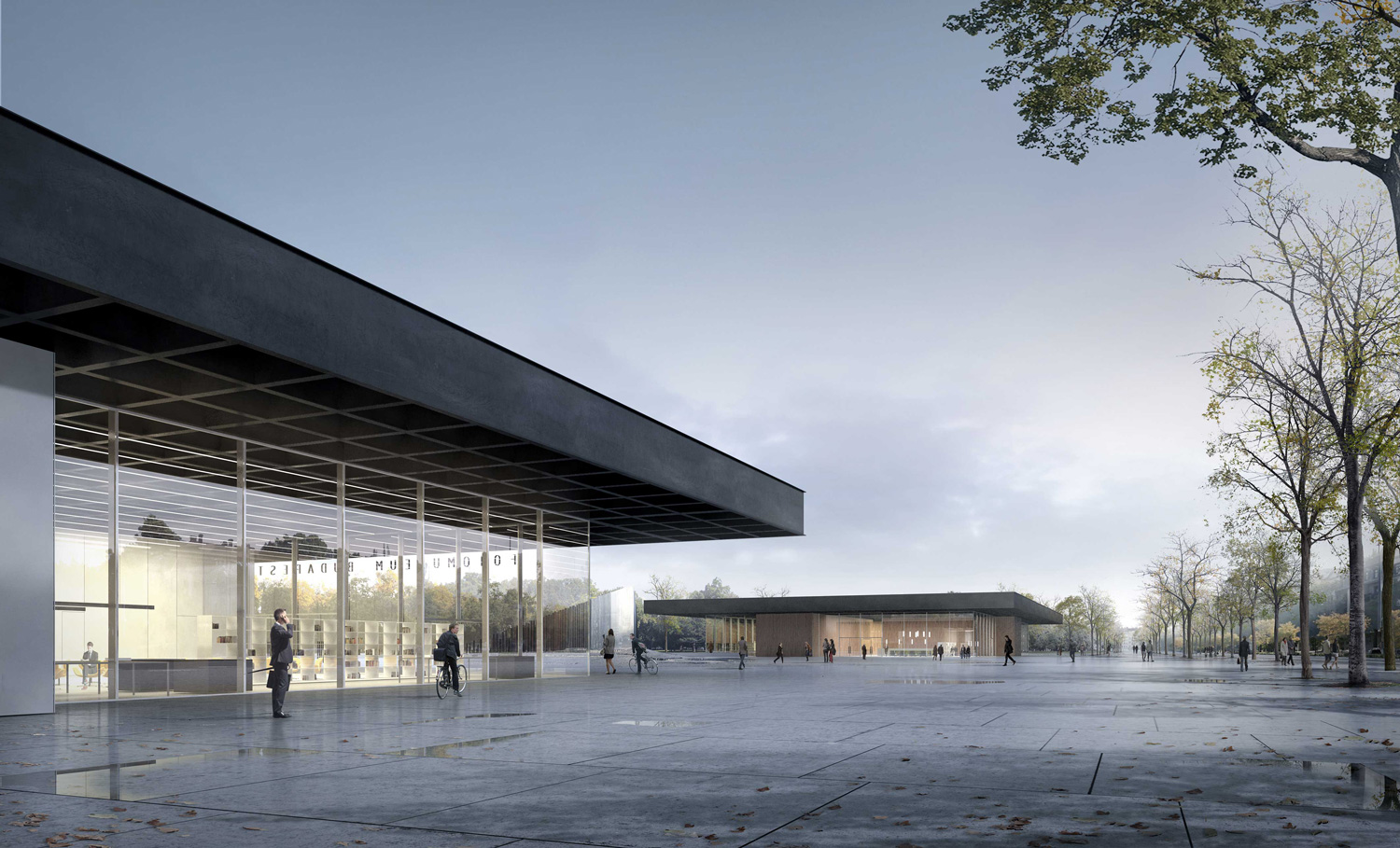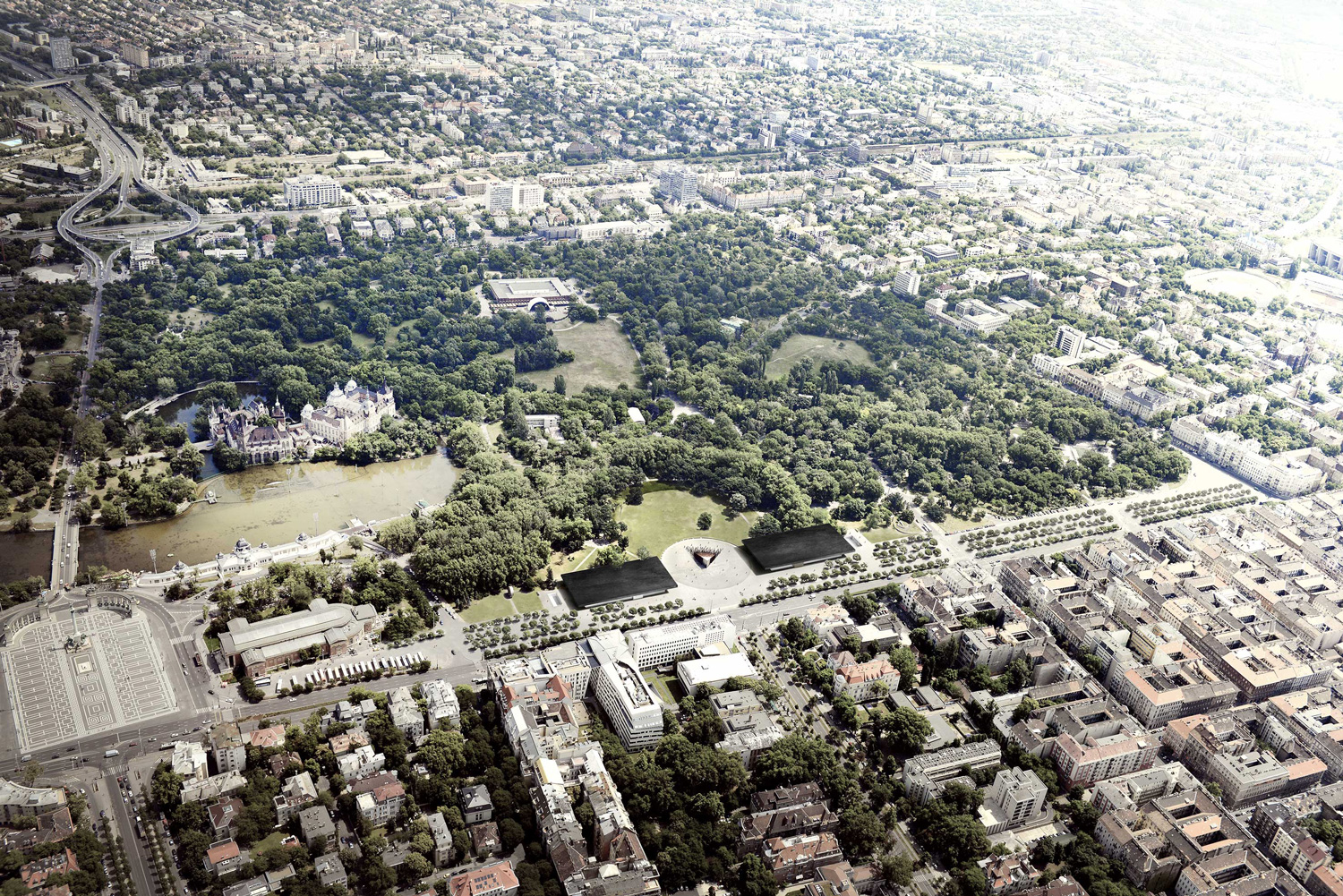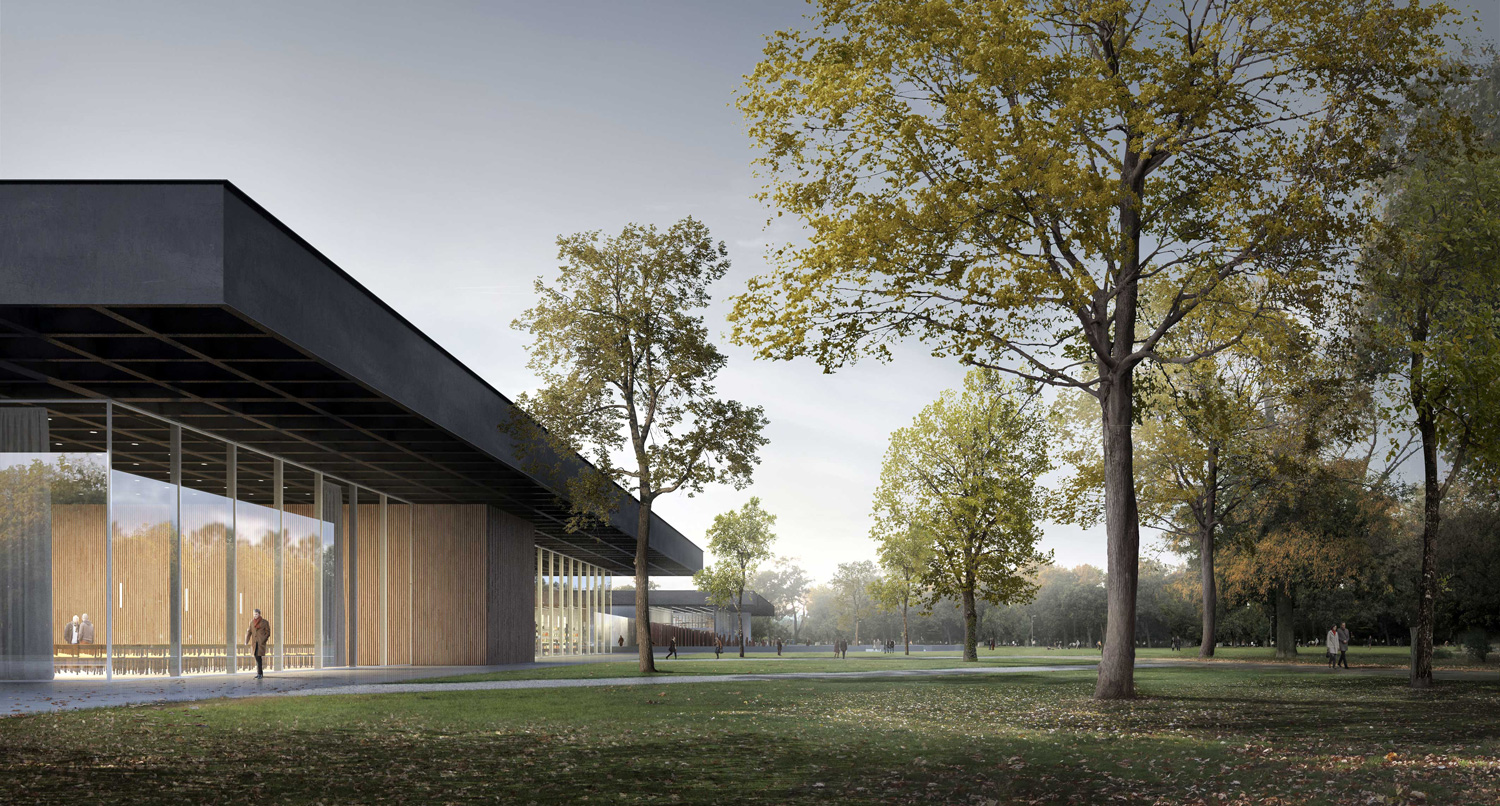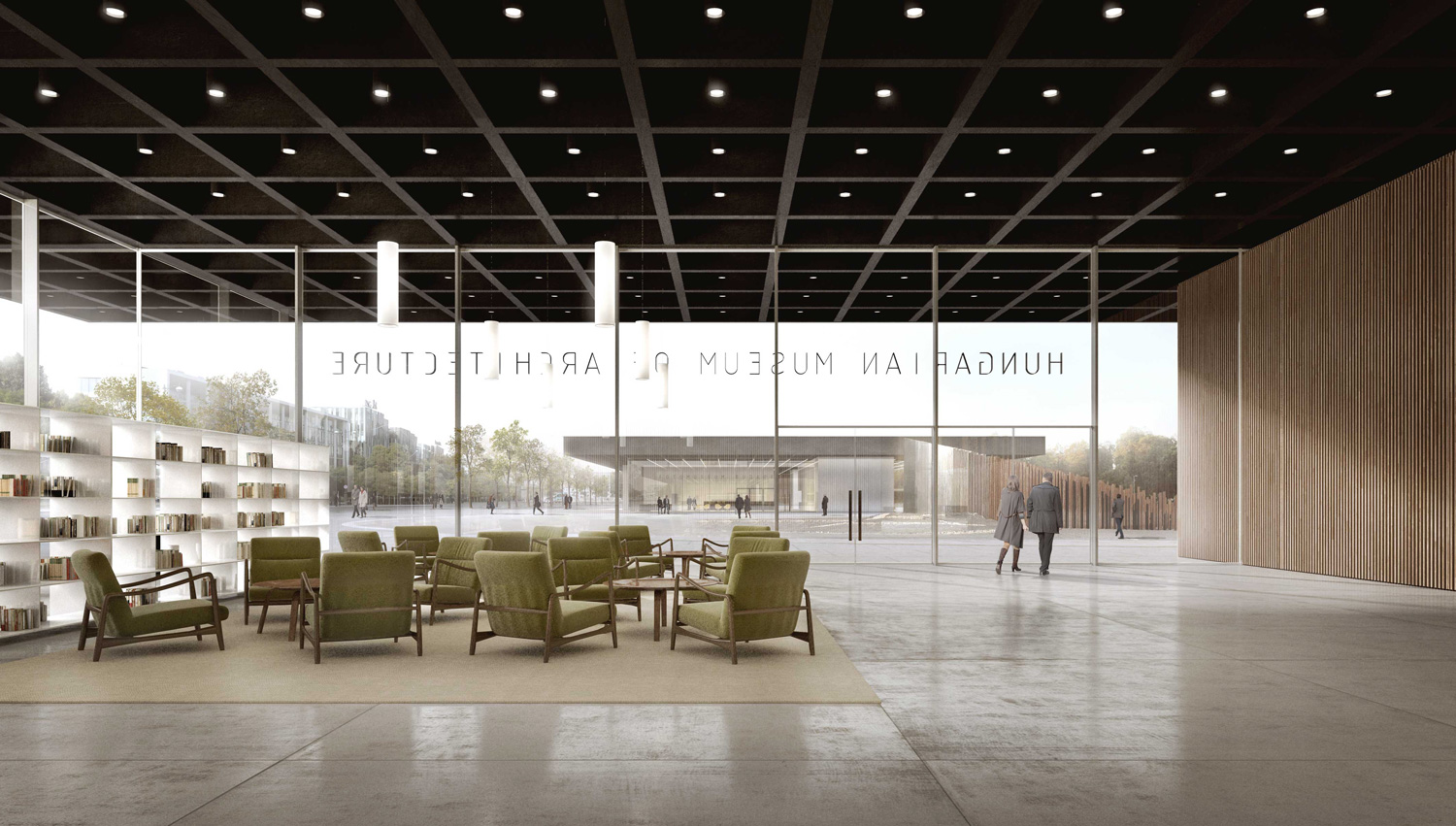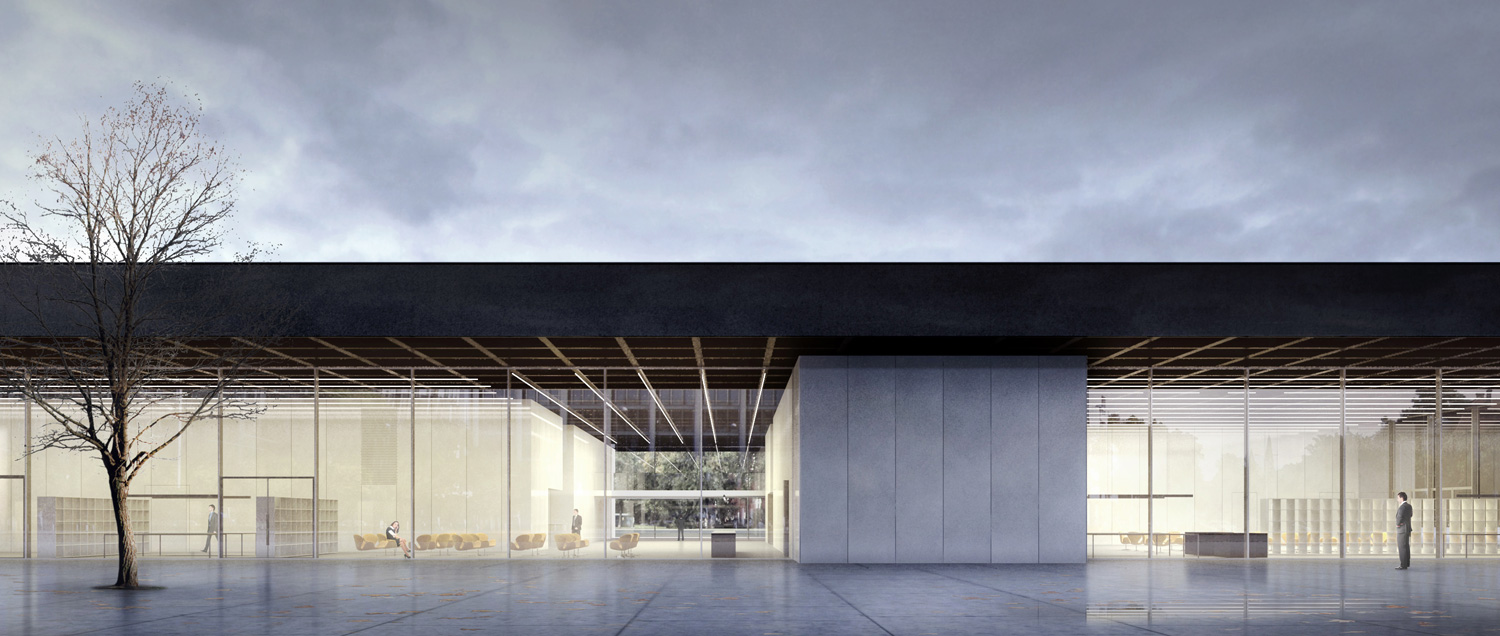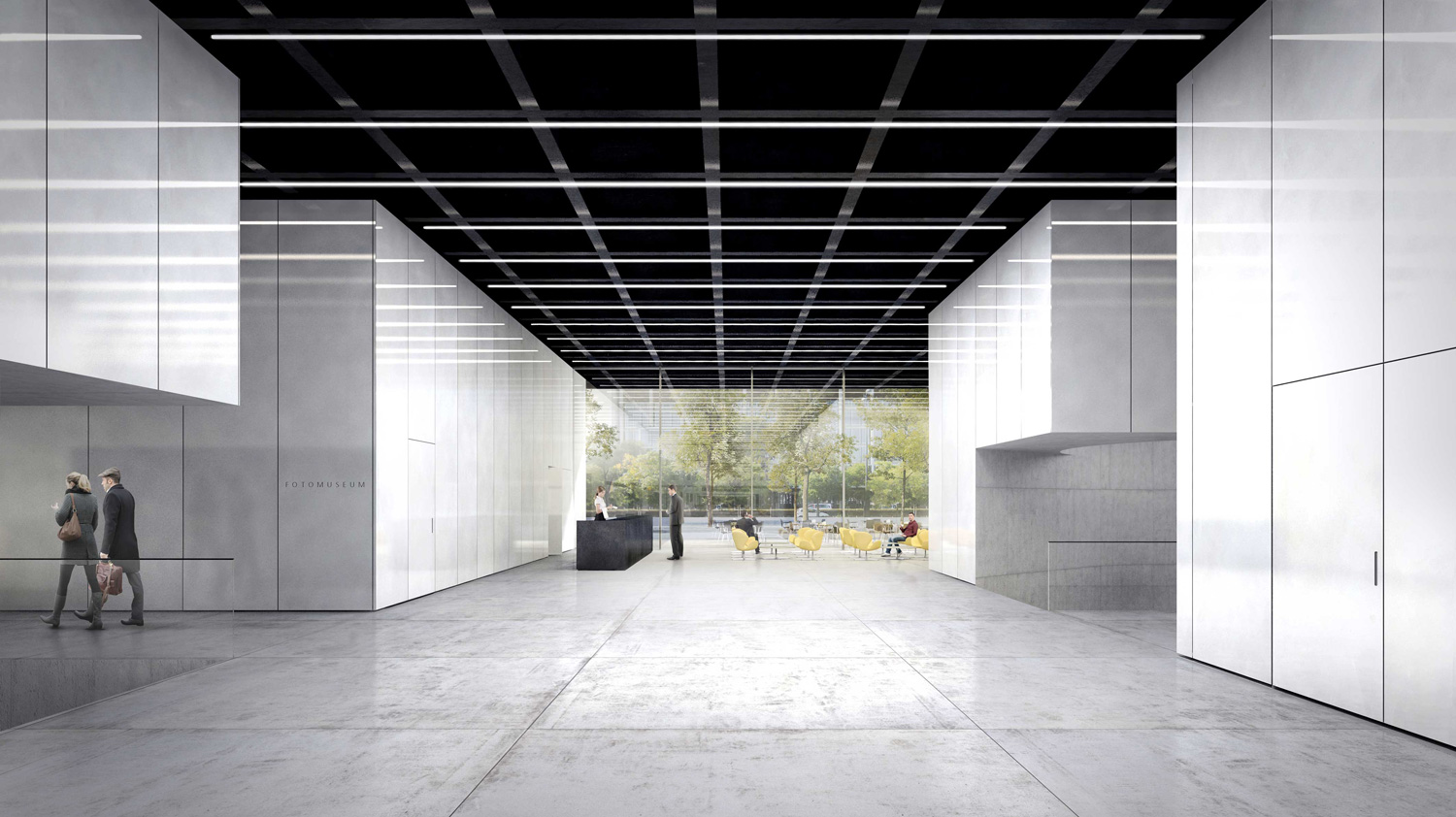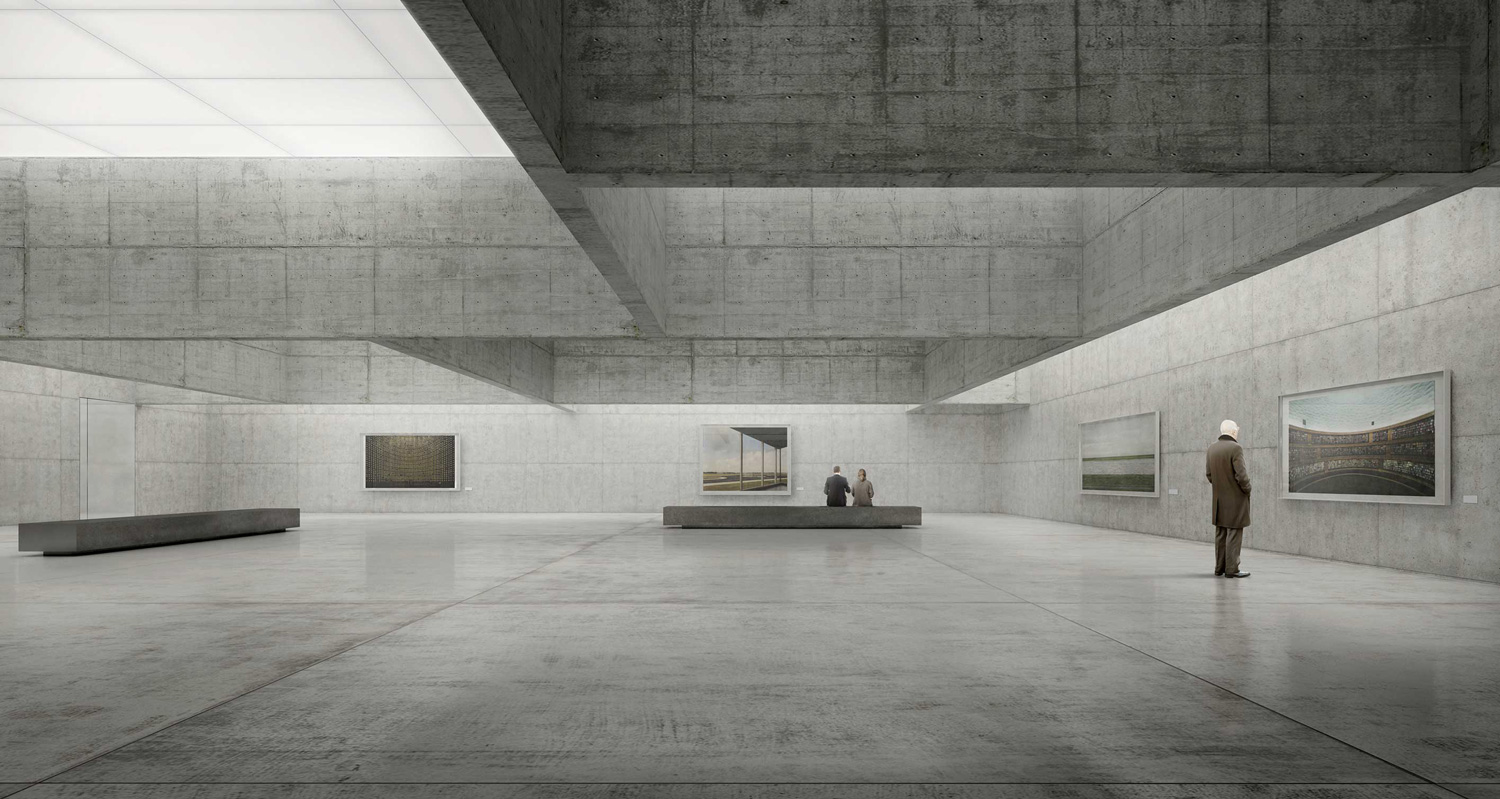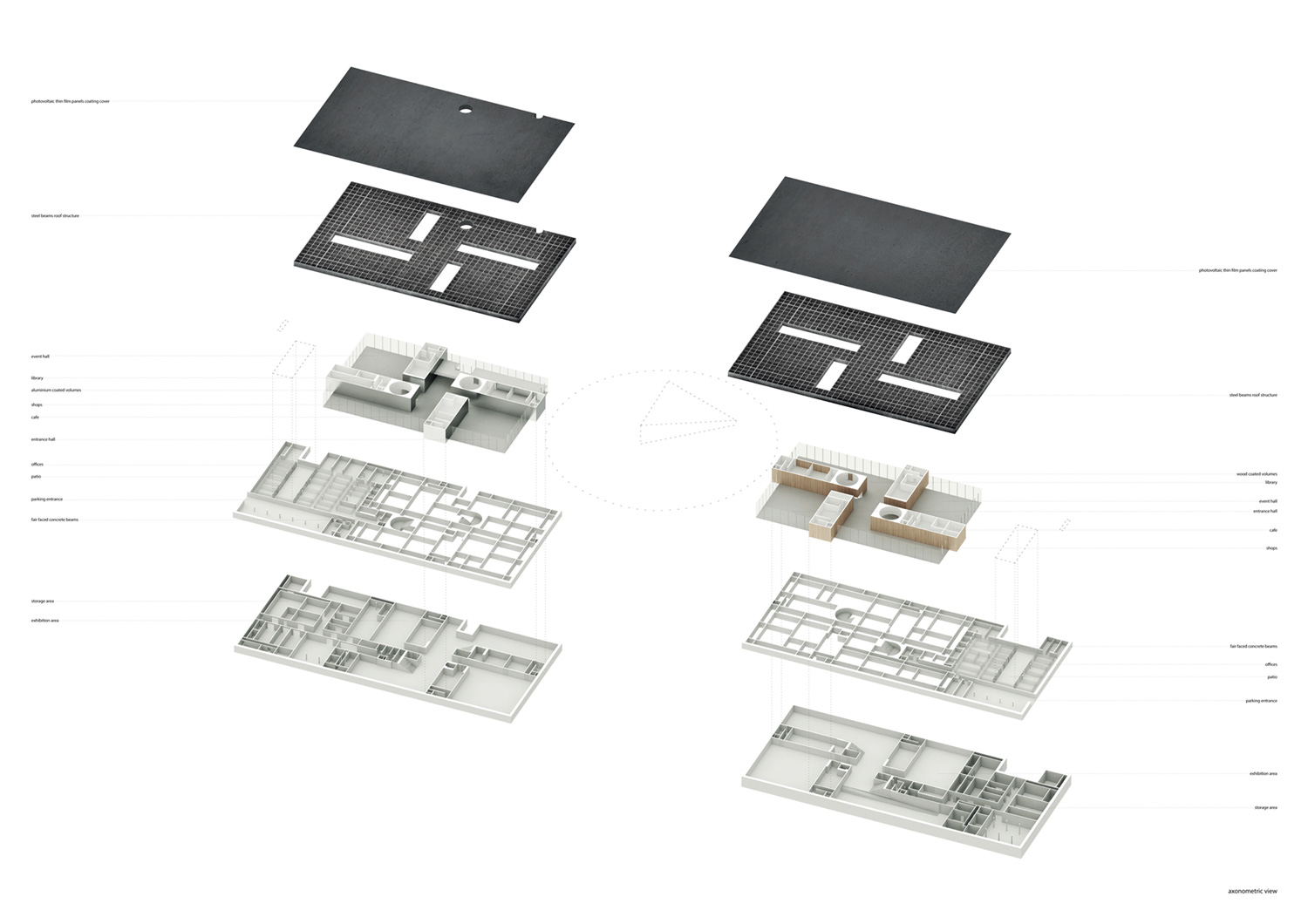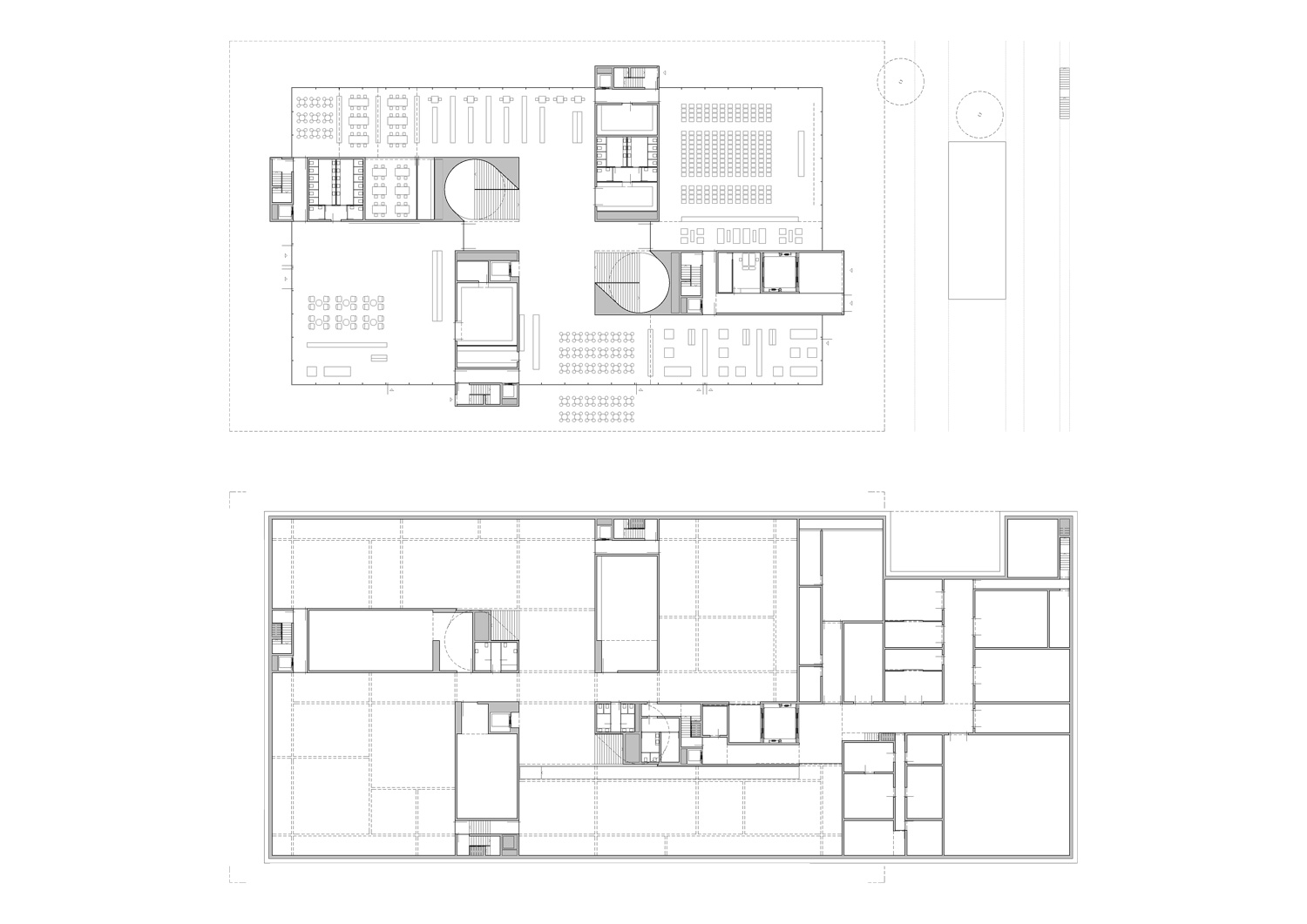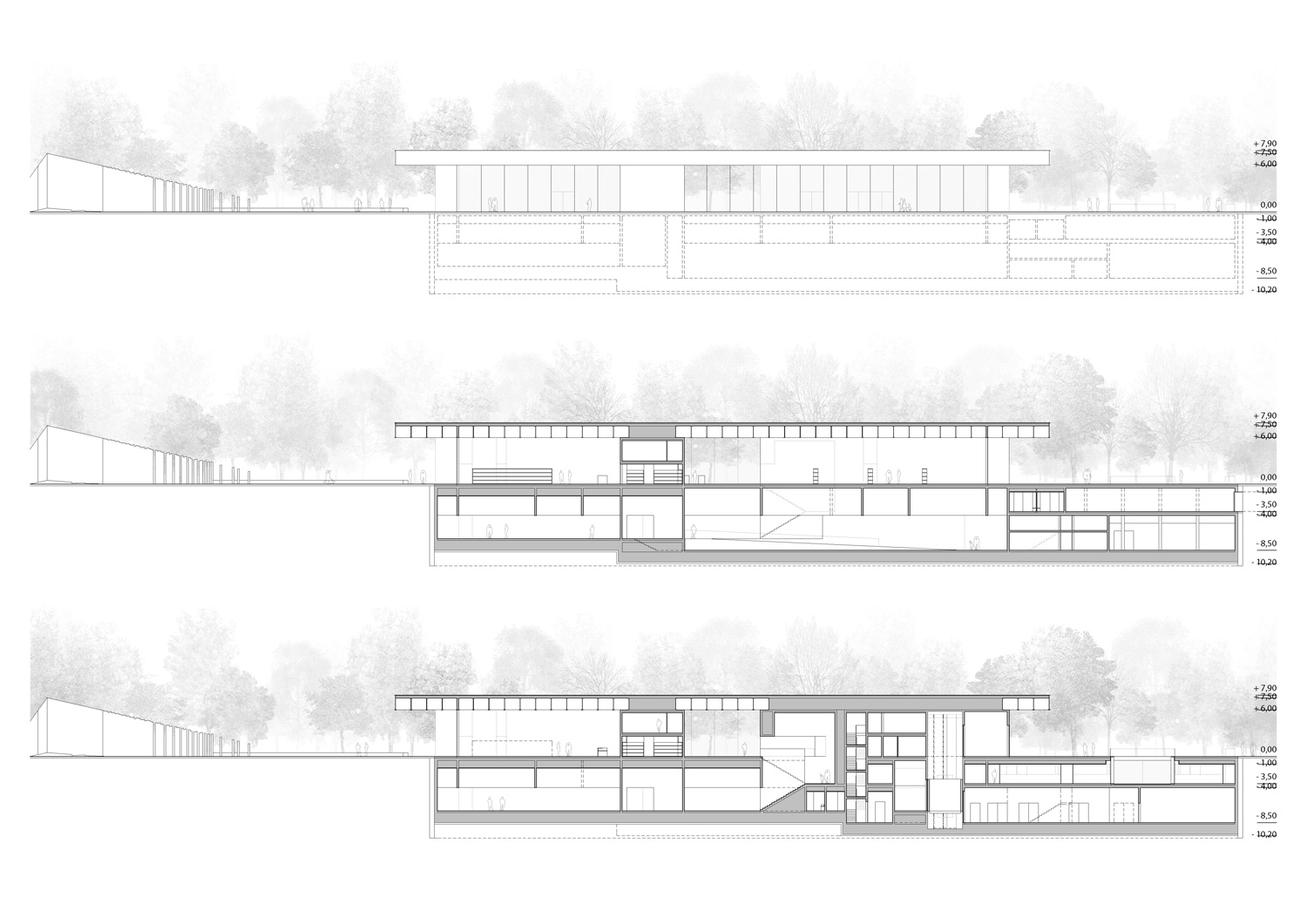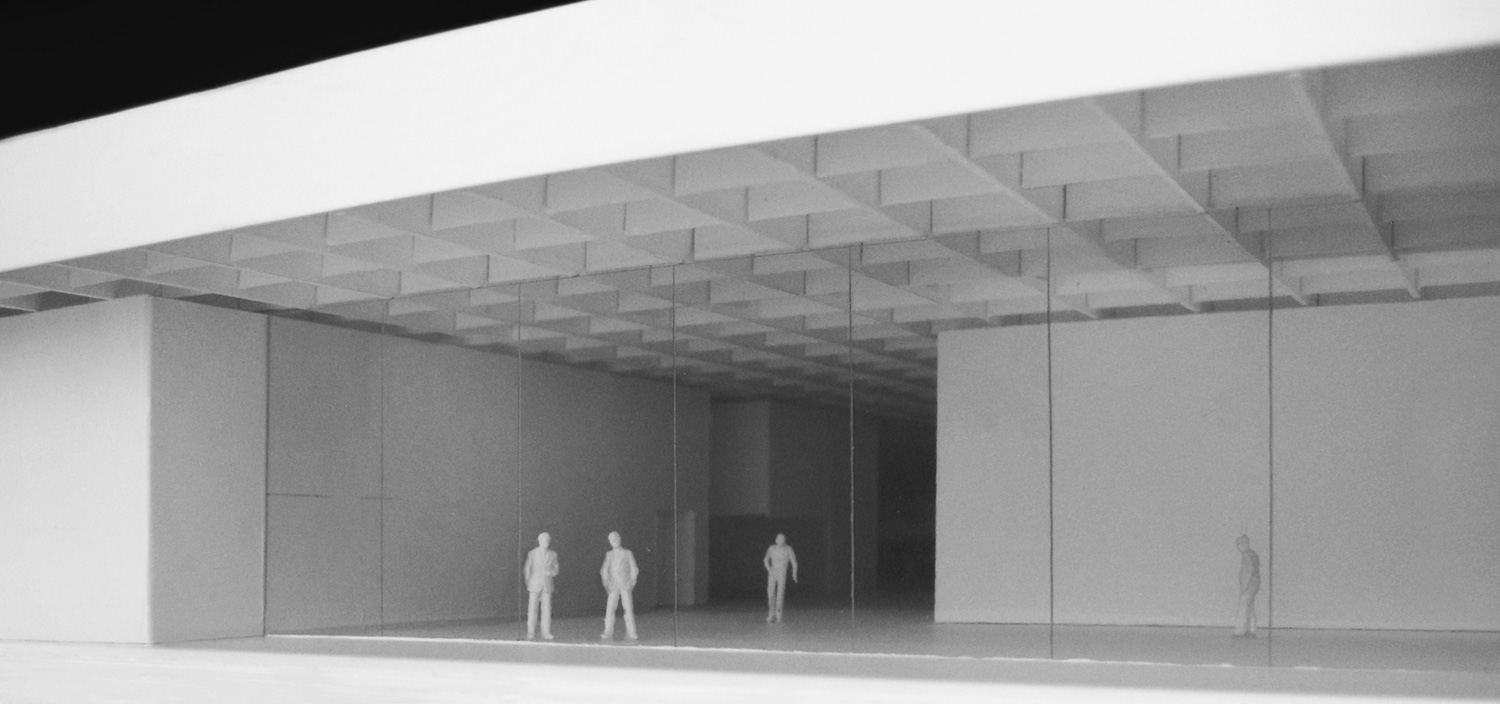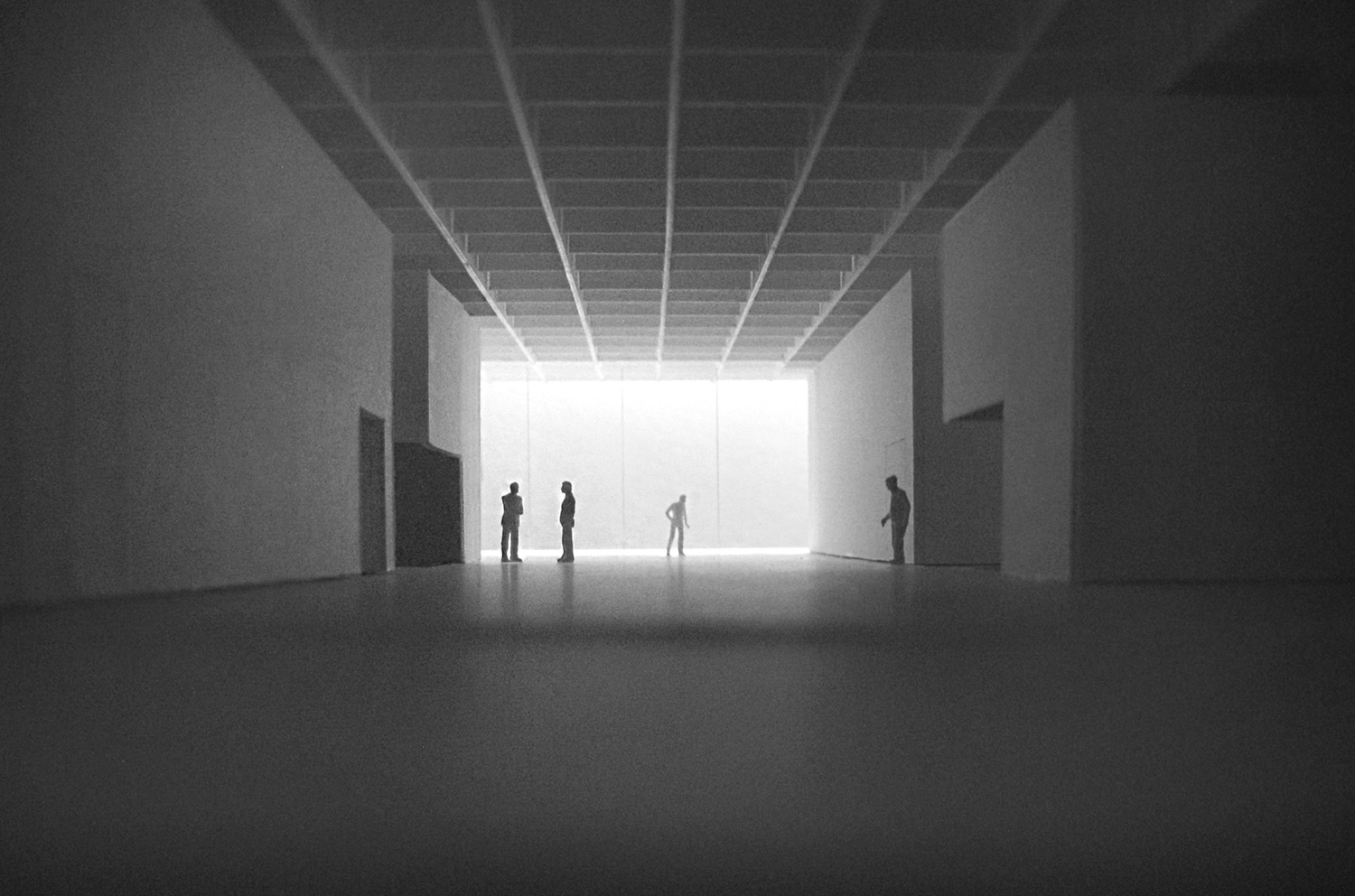☉ Hungarian Museum of Architecture and the Fotomuzem is a second prize competition entry by GSMM Architetti for Musuem of Fine Arts Budapest in 2014. It is located in Budapest Hungary in a park and urban setting. Its scale is large. Key materials are glass, metal and wood. Review the 2 proposals for the same competition.
The project area for the FotoMuzeum Budapest and of the Hungarian Museum of Architecture is located within the framework of the Liget Budapest project in a transition zone between the urban tissue and the large City Park.
The project involves the construction of two museums that reflect a modern interpretation of the museum typology, a place with an important function as a public space and meeting place that invites the exchange of information and sharing.
The project can be translate in the materialisation of these premises: a transparent and flexible space that assumes the filter function from the city to the park and vice versa. At the same time, the project doesn’t renounce to a very modern and recognisable image for its function capable to cause a fluid continuity with the park becoming a reference and characterisation element as a gateway to the park from Ötvenhatosok Square.
The two buildings are assumed as two great coverages which draw a new horizon line and of transition between these two specific moments. Thanks to the lightness and transparency of the structures, the two architectures can be perceived as pavilions in the park. Their slight and slender volume mitigates the urban impact caused by the scale of the new equipments, and together with the monument, the future boulevard and the surrounding landscape becomes a new urban reference, a new space of interaction and forum.
For this reason, the two museums have only one floor above ground emphasising the idea of continuity and extension of public space.
With 84 m length and 50 m wide of covered area, the new museums can be easily identified from outside introducing a human scale into the structures, inviting the use of these spaces as true centres of research and participation.
The general strategy of the project is essentially based on the unity of all spaces and at the same time on the diversification of the proposals atmospheres for both museums.
The main program is organised in two floors, a ground floor for hospitality and an underground level, for exhibitions, artefact handling and administration.
On the ground floor, four simple volumes, arranged perpendicularly between them and connected by a glazed curtain wall, sustain the flat coverage.
A system of metal beams, defined by a reticular grid, dictates the rules of the coverage and establishes the modularity of the ground floor spaces.
The buildings are conceived to be transparent, light and permeability and are assumed to be a single entity with slight variations, while the full volumes of the Hungarian Museum of Architecture are wood coated, inspired by ancestral constructions, the full volumes of the FotoMuzeum Budapest are aluminium coated, creating effects of reflection of reality, introducing the theme of the observation of the world through the camera lens. Lighting and furniture also contribute to the creation of the single identity of museums.
Spaces on the ground floor are defined as large open spaces, transparent, flexible and adaptable which are defined through four volumes that host vertical connections, service areas or spaces with specific characteristics. In this floor all activities of reception, museum learning and events take place.
The underground level is also organised through the four concrete volumes enrich by an orthogonal system of large fair-faced reinforced concrete beams that divide spaces in a regular way, emphasising different hierarchies and atmospheres. This structural beam system minimises the presence of vertical structures, allowing the organisation of a plant extremely flexible and with large free open spaces for the exhibition areas.
